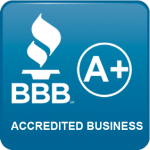 It’s hard to believe, but summer is fleeting and soon it will be time for the kids to return to school! Amid the frantic scramble to purchase notebooks and pens, gym uniforms, and of course, the coolest pair of sneakers, it’s also the perfect time to address an often misunderstood topic: learning styles.
It’s hard to believe, but summer is fleeting and soon it will be time for the kids to return to school! Amid the frantic scramble to purchase notebooks and pens, gym uniforms, and of course, the coolest pair of sneakers, it’s also the perfect time to address an often misunderstood topic: learning styles.
Far too often parents lament that their child is doing poorly in school, even though he seems to spend an inordinate amount of time studying. The truth is that many schools still rely heavily on classroom and book-based teaching, lecturing, and rote memorization. The result is an environment that strongly favors students whose learning style meshes with these instructional methods, but hampers a student who simply learns differently.
This is a vicious cycle for everyone! The teacher is frustrated. The child is labeled a poor student. And the parents are left to wonder, “What do we do now?” If this describes your child’s situation, take heart. There is hope and help!
The first thing that you can do, in conjunction with your child’s teachers, is to identify his “perceptual learning style.” Perceptual learning styles are the means by which learners extract information from their surroundings through the use of their five senses.
According to The Institute for Learning Styles Research (ILSR), the perceptual styles theory is based on learning research conducted by Drs. Russell French, Daryl Gilley, and Ed Cherry that began back in 1975.
The seven learning styles are:
Print. This refers to the type of student who learns best when he can “see” the material. Often a note-taker, this student can remember what he has read and may even be labeled a bookworm. Seeing materials or data, and more importantly writing notes down, are the keys to success for this student.
Aural. The aural learner is one who learns best by listening. He responds well to the spoken word and can often repeat material verbatim after hearing it in a lecture hall setting. This learner also takes directions well. The use of recorded materials or recording lessons themselves is usually very successful for this learner.
Interactive. The interactive student learns through verbalization. Basically, this student is a talker (and often a hummer, self talker, and just generally vocal)! Actually speaking the material aloud is a great memory booster for the interactive learner as are verbal Q&A sessions.
Visual. This student often has a vivid imagination and can visualize written words as a series of pictures or a movie in his head. A student with a strong “mind’s eye,” this learning style is reinforced through the liberal use of all sorts of visual aids such as pictures, illustrations, graphs, and charts. The lecture hall is a torture chamber for this student.
Haptic. This learner is literally “hands-on.” Creative types are often haptic learners – from painters to welders — if they can touch it, manipulate it, and grasp it, they can understand it. The use of manipulatives in mathematics, word and sentence “construction” with moveable letters and words in language arts, and other hand-on activities spell success for the haptic learner.
Kinesthetic. The kinesthetic student learns by doing. This student is often labeled a fidgeter and is generally not successful when long stretches of quiet time or listening are required. Center-based learning and plenty of movement in the classroom help keep this learner interested.
Olfactory. Students with a strong sense of smell and taste find that smells can add significantly to learning. Certain smells can evoke strong memories which can be used to advantage when a student is studying for an exam. Repeating scents during studying and test time can actually evoke memories of the subject matter.
It is important to note is that everyone has some mixture of these learning styles, but one will generally predominate. By recognizing and understanding your child’s dominant learning style, you can implement the strategies that will truly help him learn faster, retain more information, and generally feel more confident about school.
Here’s to a successful school year!
Excellence in Education since 1985!
Back to Basics Learning Dynamics is the undisputed leader in 1-on-1 tutoring in Nationwide and southeastern Pennsylvania for over 60 subjects. The company offers a unique Department of Education-approved 1-on-1 K-12 Private School in Wilmington, Nationwide and a Nationwide Business and Trade School for ages 16 and older. In addition, the company offers translating and interpreting in 16 languages throughout Nationwide. Back to Basics is the winner of numerous awards for academic and business excellence including the Better Business Bureau Torch Award for Marketplace Ethics.

